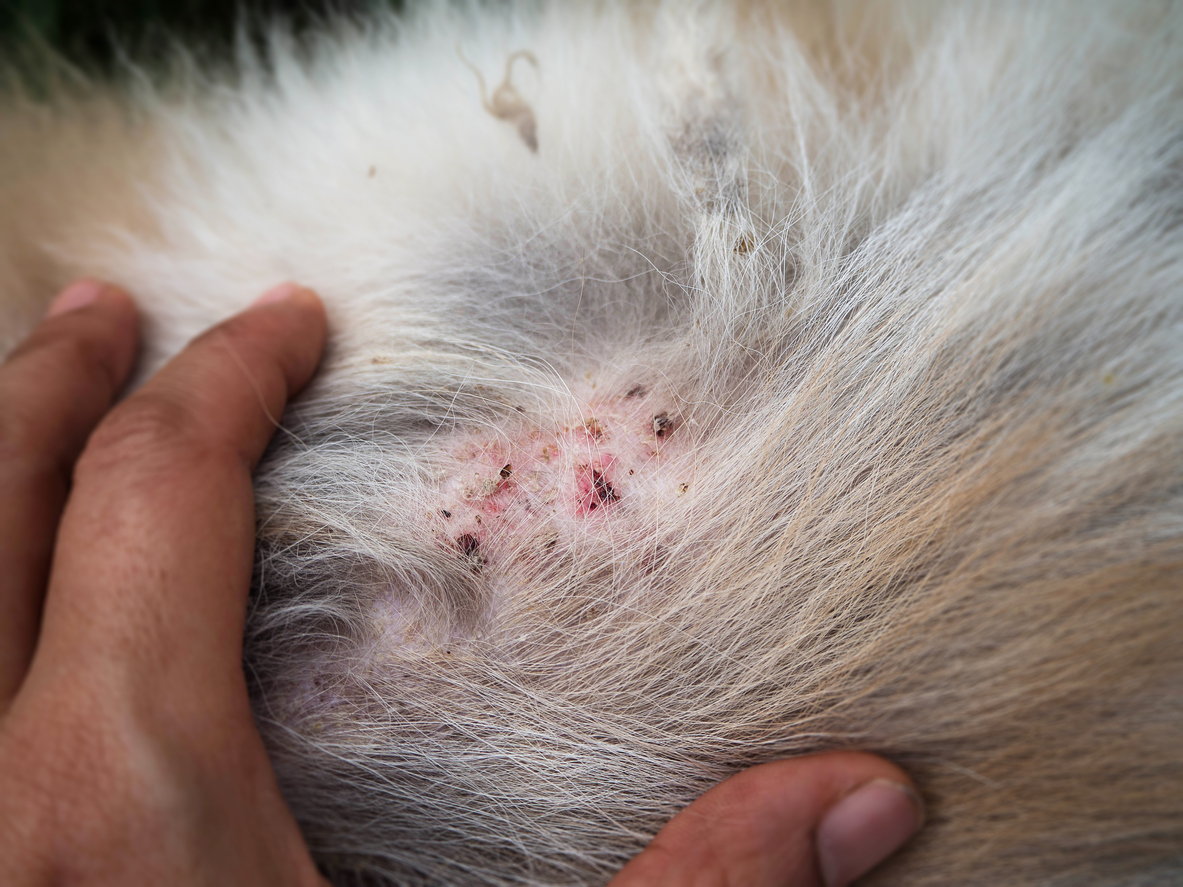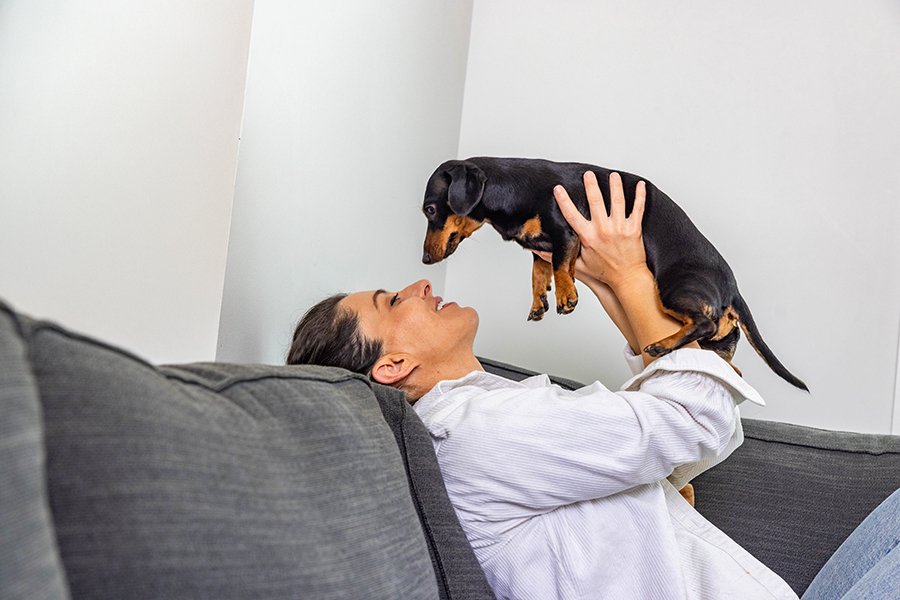How Do Dogs Get Staph Infections?
Staph infections can flare up at any time. This common pathogen is present on the skin of most animals, including your pup.
Staph infections in dogs are just as opportunistic as in humans. Here’s a short riddle for you. What’s a normal bacteria found in everyday life that is harmless until it finds an opportunity to infect the skin?
If you thought of a staph infection, you’re right. This common pathogen is present on the skin of most animals, including your pup. It lurks around, waiting for an opportunity to invade below the skin barrier, where it can multiply and make your dog dangerously ill if left untreated.
What Is a Staph Infection in Dogs?
Staph infections go by many names, including staph dermatitis and staphylococcal pyoderma. You may know dermatitis relates to the skin or epidermis. In such instances, staph dermatitis refers to red, itchy skin. Pyoderma references pus as in pustules or pimples with pus, which are often signs of bacterial skin infections.
Typical symptoms of staph include red, inflamed, and sometimes crusty skin patches that turn your pooch into a contortionist as she chews, licks, and scratches away.
While staphylococcus is an everyday topical bacteria found on all of us, it turns problematic when there’s a skin irritation. Sometimes, that skin irritation is a simple scratch, allowing the opportunistic pathogens to march right past the skin barrier and set up camp. From there, these pathogens multiply and can turn a simple skin irritation into a full-blown staphylococcal infection.
Common Causes of Staph Infections in Dogs

No one wants their dog to suffer from a staph infection. So, what’s the underlying cause for these insidious pathogens to wreak havoc with your poor pup?
The problem starts with your dog’s immune system. Healthy dogs have healthy skin and coats. Their skin doesn’t seem dry or oily but normal, and their coats are shiny. Such dogs are less likely to get skin infections because their immune system fights off potential infections by sending a legion of white blood cells to hold down the fort against marauding invaders.
If Staphylococcus gets past the skin barrier in healthy dogs, their white blood cells will fight off the intruders.
If your dog has a weakened immune system, run-of-the-mill skin conditions offer opportunities for Staphylococcus to slip past the gates, so to speak.
Imagine your dog irritating her skin by chewing, scratching, or licking an area repeatedly. Red, irritated skin is an invitation for the staph bacteria to scurry under your dog’s skin, where they multiply and cause red, inflamed skin conditions, lesions, pustules, and more.
If you have an older dog or a dog who has hypothyroidism or other serious health issues, they’re at greater risk for contracting a staph infection simply because they have a weaker immune system. In such dogs, a staph infection can start as a skin infection and turn into an ear infection or worse.
Environmental factors like fleas or allergens and food sensitivities can be an underlying cause for a weakened immune system.
Symptoms of a Staph Infection

Staph infection symptoms vary depending on severity. Some common signs to look out for include:
- Chronic itchiness
- Areas of the body hot to the touch
- Increased chewing and licking, usually in the same spot
- Hair loss
- Crusting skin lesions
- Crusty skin patches
- Pustules or peeling skin
- Appetite loss
- Coughing or trouble breathing
- Lethargy
- Fever
- Straining to urinate or urinating more frequently
As you can see, these symptoms mirror many other health conditions, so you won’t know the source until you bring your floof to the veterinarian. At the vet’s office, they can do a skin swab and assess your dog’s skin.
Left untreated, your dog can pass staphylococcus infections onto other dogs and, occasionally, people. Severe cases of staph infection can be fatal. These are all rare, but they are possibilities.
Treatment for Staph Infections in Dogs

Some DVMs recommend treating a mild topical staph infection with antibacterial shampoo. Such shampoos can target the staph bacteria with active ingredients like benzoyl peroxide, sulfur, and other proven ingredients to rid your pup of these bacteria.
There are also sprays and ointments your veterinarian may recommend to treat your dog’s staph infections.
If shampoos or sprays don’t help your dog, or your dog’s case of staphylococcal infection is severe, your veterinarian may recommend oral antibiotics or an injection.
Occasionally, your dog may be allergic to staph bacteria, which means the pathogens can come back right after treatment.
Additionally, there’s a type of staph that’s antibiotic-resistant. This is known as methicillin-resistant Staphylococcus aureus (MRSA), which is more common in humans than dogs, but it’s possible.
The more common dog version is known as methicillin-resistant staph or pseuditermedius (MRSP). In either case, it’s difficult to treat and more contagious. You’ll work closely with your veterinarian to treat this type of staph infection and need to maintain rigorous hygiene at home, especially around any household members who are immune compromised. The vet will take a sample to perform a skin biopsy to find the appropriate antibiotic for that particular strain of staph.
Common Misconceptions About Staph Infections in Dogs
There are many myths about staph bacteria. There’s no need to panic if your dog develops skin lesions or red patches. Take a few pictures to document the area and schedule an appointment with your veterinarian.
Here are a few common misconceptions.
- Staph infections are always serious: Not always. Catch skin infections early, and you may be able to treat them with shampoos or sprays.
- Staph infections are always contagious: It’s possible but not likely. Wash your hands frequently and your dog’s bedding. Good hygiene goes a long way to prevent contagious bacteria from contaminating others.
- Get rid of the staph, and your dog is fine. Staph is usually a secondary infection meaning your dog has an underlying condition. Such a condition could be a weakened immune system due to ongoing health issues.
Preventing Staph Infections
Two keys to preventing skin conditions like staph infections include supporting your dog’s immune system and maintaining good hygiene at home. Do not underestimate the benefits of frequent washing of your hands and doggie beds.
If your dog has any skin conditions, consult with your veterinarian to determine the underlying cause. Skin irritations are common and are sometimes related to food sensitivities, environmental allergens, or potentially staph infections.
Catch them early, treat the underlying cause, and you can prevent nasty pathogens before making your dog sicker.
This content is for informational use only and does not replace professional nutrition and/or medical advice, diagnosis, or treatment. It is not a substitute for and should not be relied upon for specific nutrition and/or medical recommendations. Please talk with your veterinarian about any questions or concerns.








